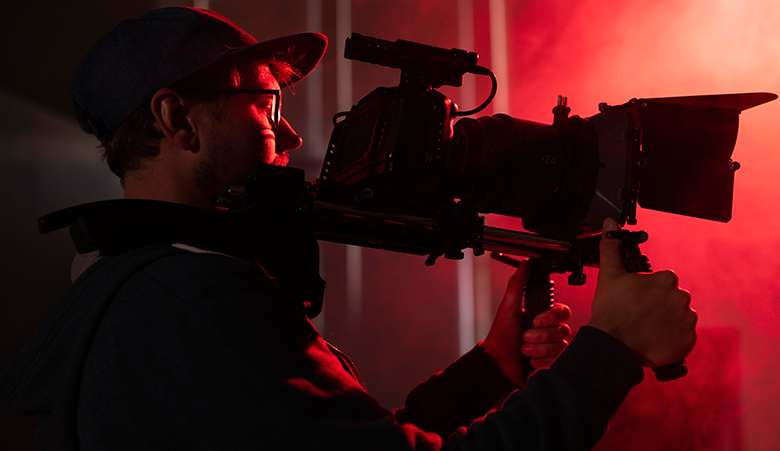Filmmaking: Exploring Techniques

Filmmaking is a fascinating combination of art and technology, where imagination meets technical prowess to bring stories to life on the big screen. Directors, cinematographers, editors, and other industry experts use a variety of filmmaking techniques to create each cinematic masterpiece. In this essay, we’ll look at the key filmmaking techniques that contribute to the magic of the silver screen.
Cinematography 
It is the process of recording moving images using film or digital media. It entails making decisions about framing, camera movement, lighting, and composition to create visually appealing scenes.
Camera Angles and Shots: Directors carefully select camera angles to communicate emotions and views. Low angles can make someone appear powerful, but high angles might convey fragility. Close-ups and wide shots influence the audience’s connection to the characters and the broader story.
Composition and Framing: Framing is critical to visual narrative. Directors use the rule of thirds, leading lines, and symmetry to direct the viewer’s attention. Composition decisions influence the film’s visual and narrative impact.
Movement: Dynamic camera movement, such as tracking shots, crane shots, or handheld cinematography, adds energy and emotion to a scene. Each movement is an intentional decision to improve storytelling.

Lighting
Lighting has a crucial role in filmmaking, influencing the mood, ambiance, and visuals.
Natural vs. Artificial Lighting: Filmmakers must choose between natural and artificial light sources to get the desired appearance. Natural light can add authenticity, whereas skillfully designed artificial lighting allows for more control.
Three-Point Lighting: A traditional lighting setup that uses key, fill, and backlighting to add dimensionality and clarity to the subjects on screen.
High and Low-Key Lighting: High-key lighting, with few shadows, frequently provides a bright and cheery environment, whereas low-key lighting, with more shadows, can create tension and intrigue.
Editing
Editing is the selection and arrangement of pictures to create a cohesive and effective story.
Pacing: A film’s speed is determined by the rhythm of editing. Quick cuts and fast-paced editing can add suspense, whereas slower editing allows for introspection and focus on emotions.
Montage: Montage is a method in which a succession of brief shots are combined together to portray the passage of time, character development, or sequence of events.
Continuity editing ensures a smooth flow of action by keeping consistency in visual features such as eyelines, screen direction, and shot design.

Sound Design
Sound design is the process of creating and manipulating audio elements to improve a film’s emotional impact.
Diegetic vs. Non-Diegetic Sound: Diegetic sound originates within the film’s universe (conversation, footsteps), but non-diegetic sound (music, narration) exists outside of it. Balancing these factors enhances the overall aural experience.
Foley and Ambient Sound: Foley artists make noises that mirror real-world actions, adding credibility to on-screen occurrences. Ambient sound, such as background noises, enhances the film’s atmosphere.
Music and Score: The musical score accentuates the emotions and themes of a film. A well-composed soundtrack can enhance the intensity of a scene, establishing a lasting emotional connection with the audience.
Production Design
Production design creates the film’s visual universe, including sets, costumes, props, and aesthetics.
Colour Palette: Filmmakers utilise colour to express emotions and ideas. A constant colour palette can help to establish a unified visual language throughout the film.
Set Design: The actual setting in which the tale unfolds adds to the film’s atmosphere and believability. Intricate set designs bring the storyworld to life.
Costume Design: Costumes are necessary for character development. They represent the individuals’ personalities, the historical background, and the film’s overall tone.

Filmmaking is a complicated dance of several approaches, each of which contributes to the immersive storytelling experience. Every decision made by filmmakers, from shot framing to editing, is intended to portray the narrative. As technology develops and creative bounds increase, filmmakers continue to push the edges of these approaches, influencing how we perceive and interact with cinematic art. Whether capturing spectacular sights, orchestrating a symphony of music, or constructing the minutiae of a character’s world, the creativity of filmmaking is an ever-changing adventure that captivates people all over the world.





